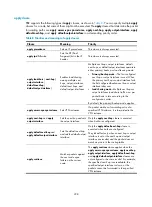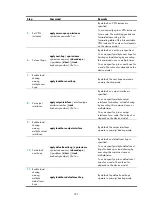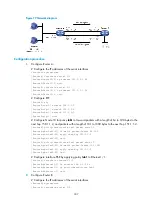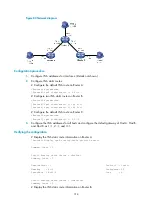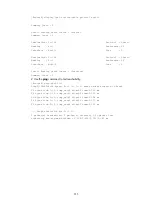
312
Step Command
Remarks
2.
Configure BFD
control mode for an
IPv6 static route.
•
Method 1:
ipv6 route-static
ipv6-address prefix-length
{
next-hop-address
bfd control-packet bfd-source
ipv6-address
|
vpn-instance
d-vpn-instance-name
next-hop-address
bfd control-packet bfd-source
ip-address
}
[
preference
preference-value
] [
tag
tag-value
] [
description
description-text
]
•
Method 2:
ipv6 route-static vpn-instance
s-vpn-instance-name
ipv6-address prefix-length
{
next-hop-address
bfd
control-packet bfd-source
ipv6-address
|
vpn-instance
d-vpn-instance-name next-hop-address
bfd control-packet
bfd-source
ipv6-address
} [
preference
preference-value
]
[
tag
tag-value
] [
description
description-text
]
Use either
method.
By default, BFD
control mode
for an IPv6
static route is
not configured.
Single-hop echo mode
With BFD echo mode enabled for a static route, the output interface sends BFD echo packets to the
destination device, which loops the packets back to test the link reachability.
IMPORTANT:
Do not use BFD for a static route with the output interface in spoofing state.
To configure BFD echo mode for an IPv6 static route:
Step Command
Remarks
1.
Enter system view.
system-view
N/A
2.
Configure the source
address of echo
packets.
bfd echo-source-ipv6
ipv6-address
By default, the source address
of echo packets is not
configured.
The source address of echo
packets must be a global
unicast address.
For more information about this
command, see
High
Availability Command
Reference
.

